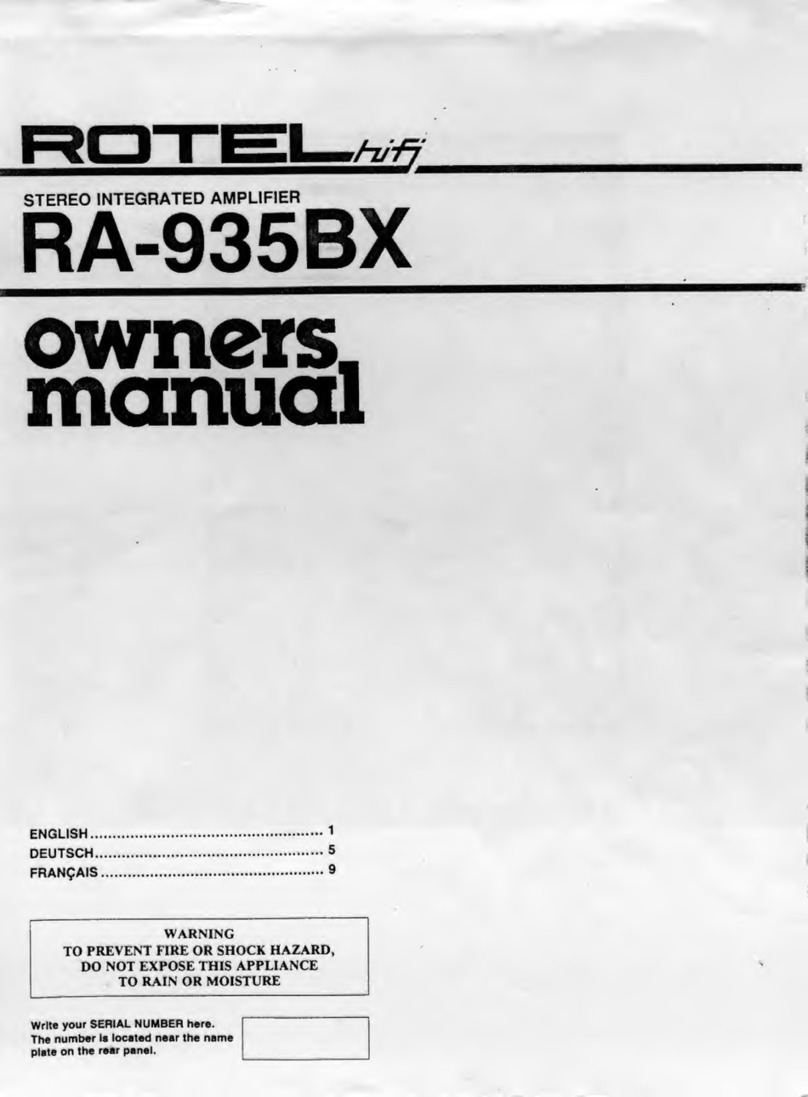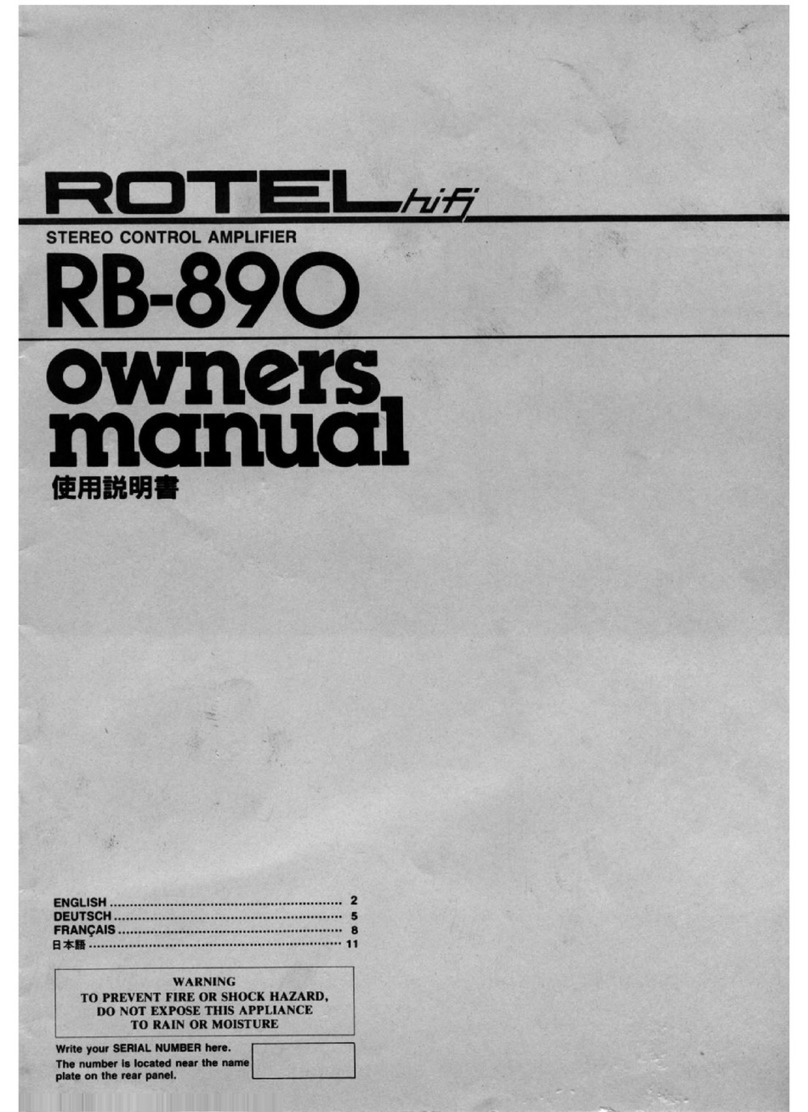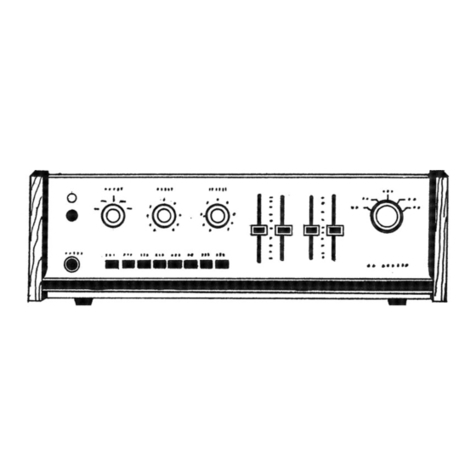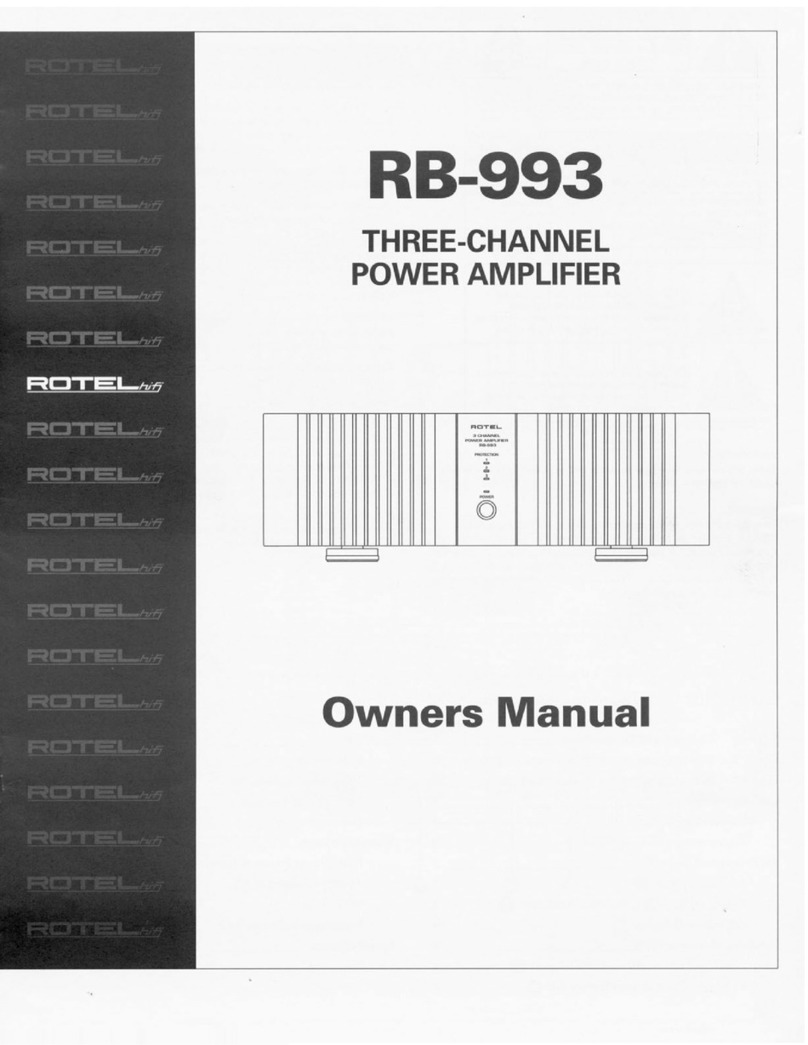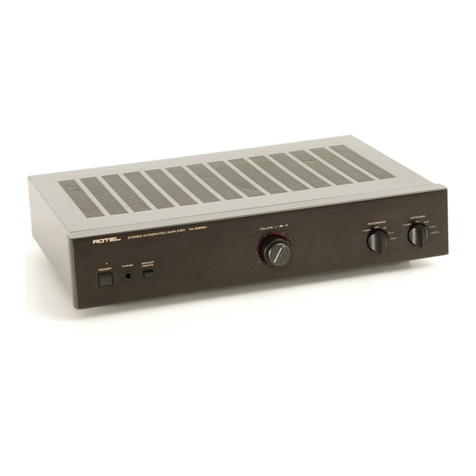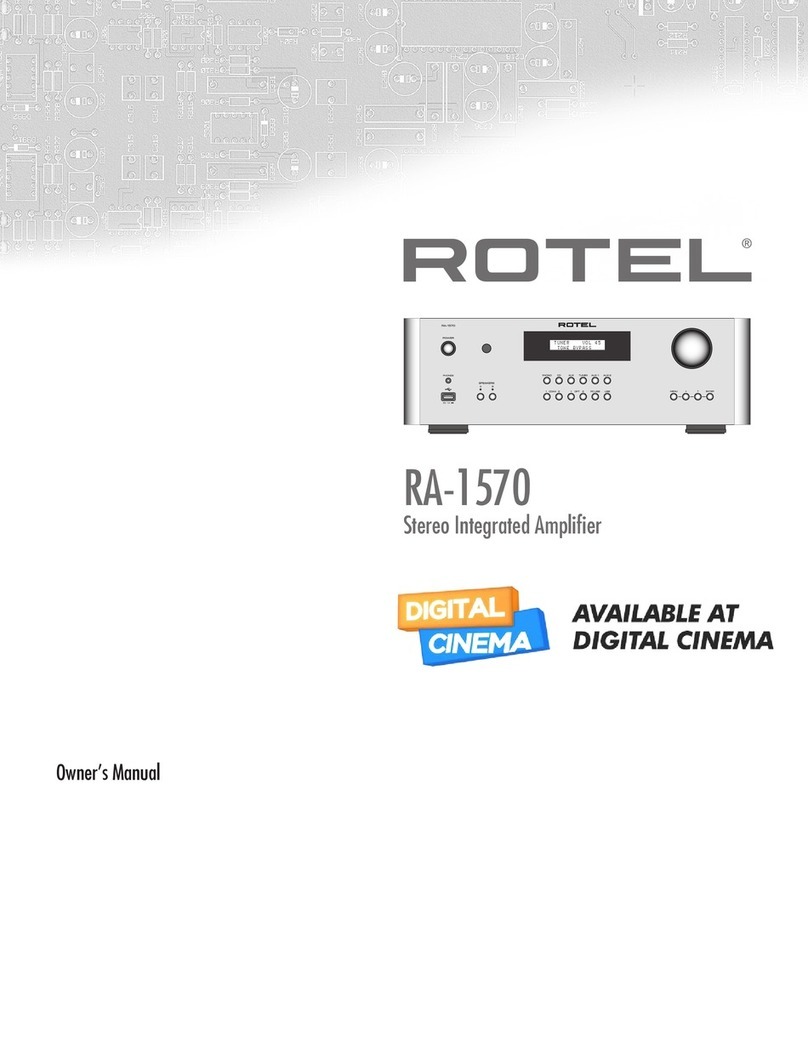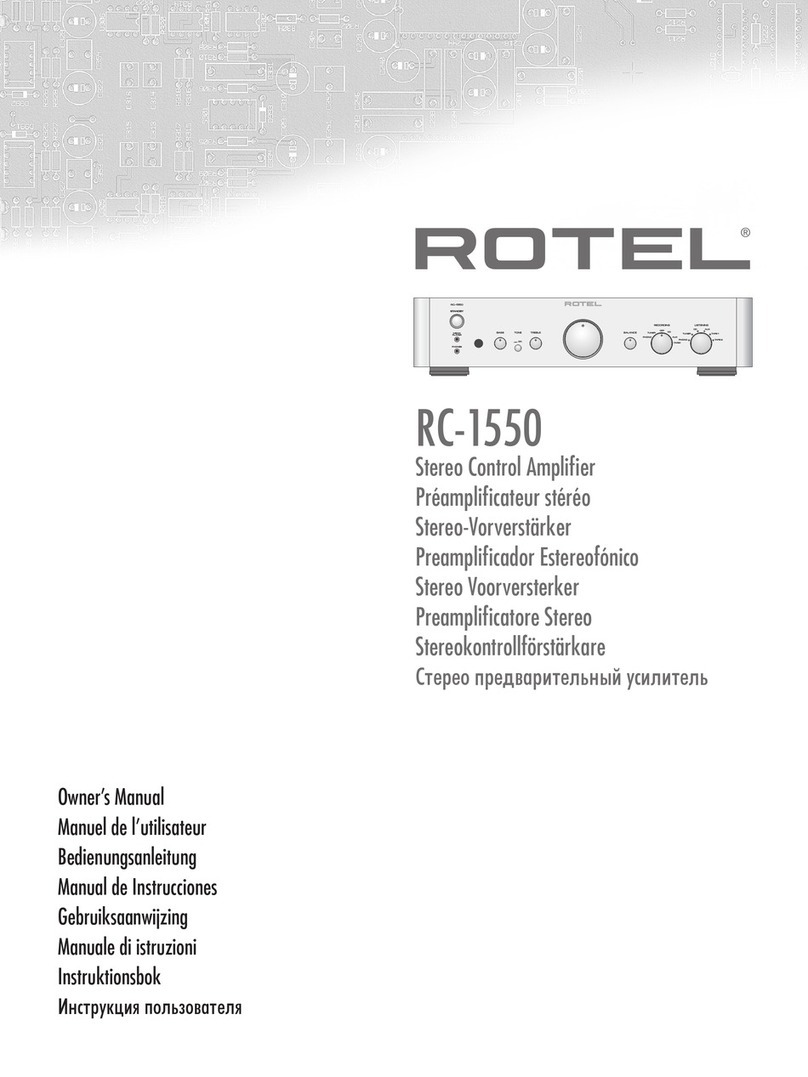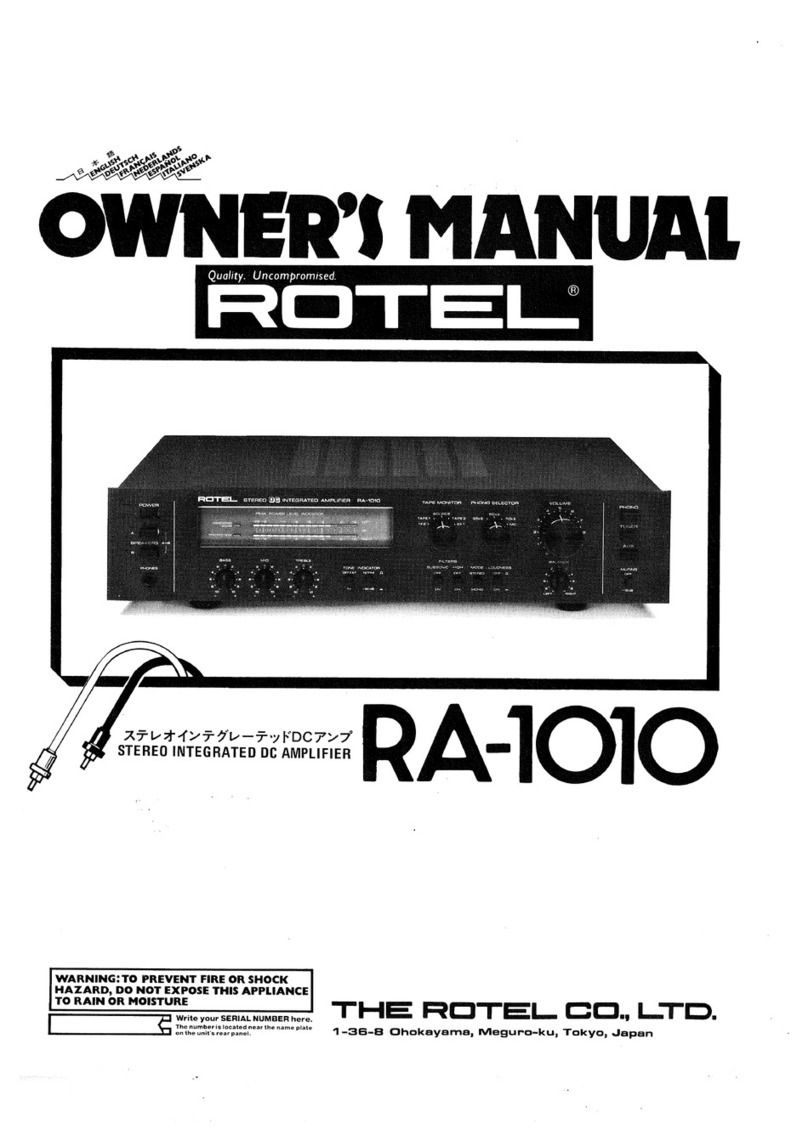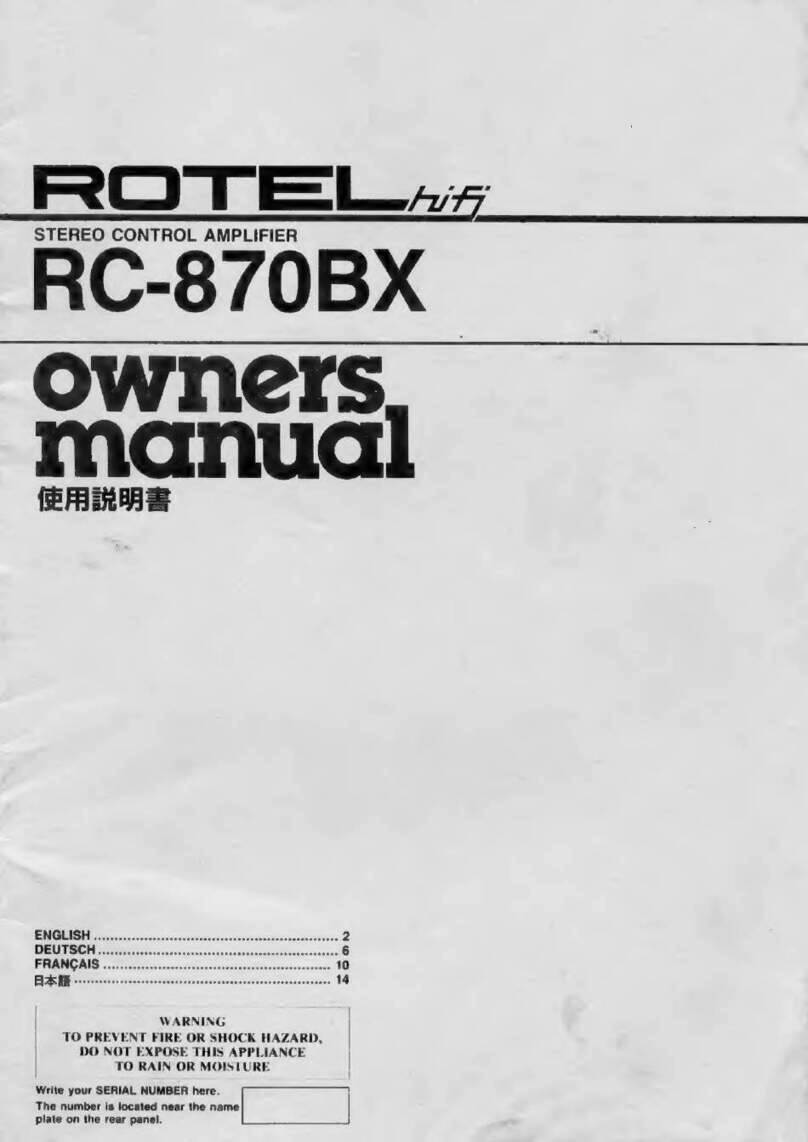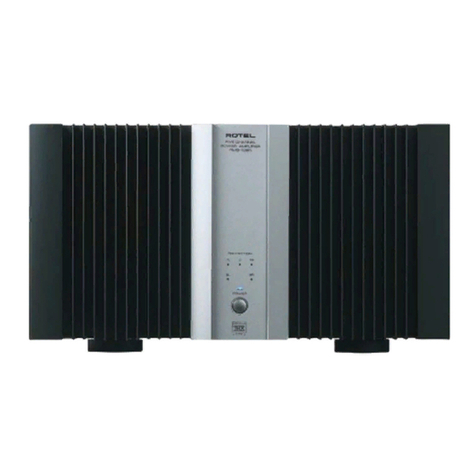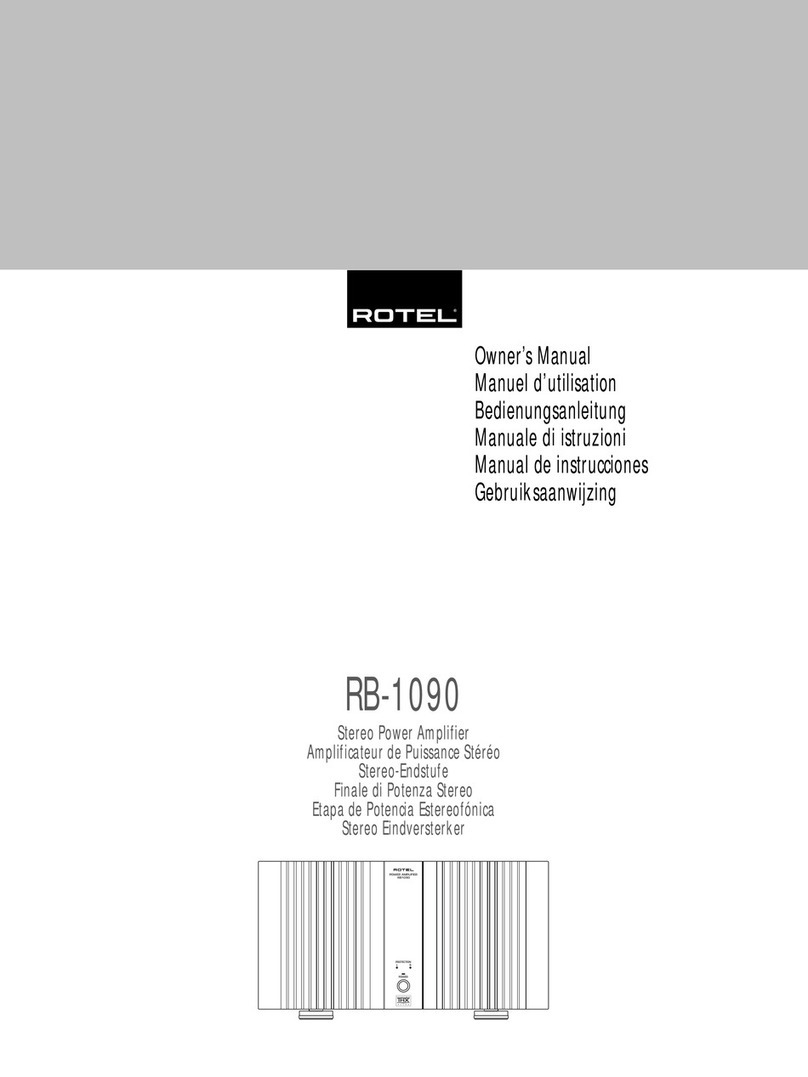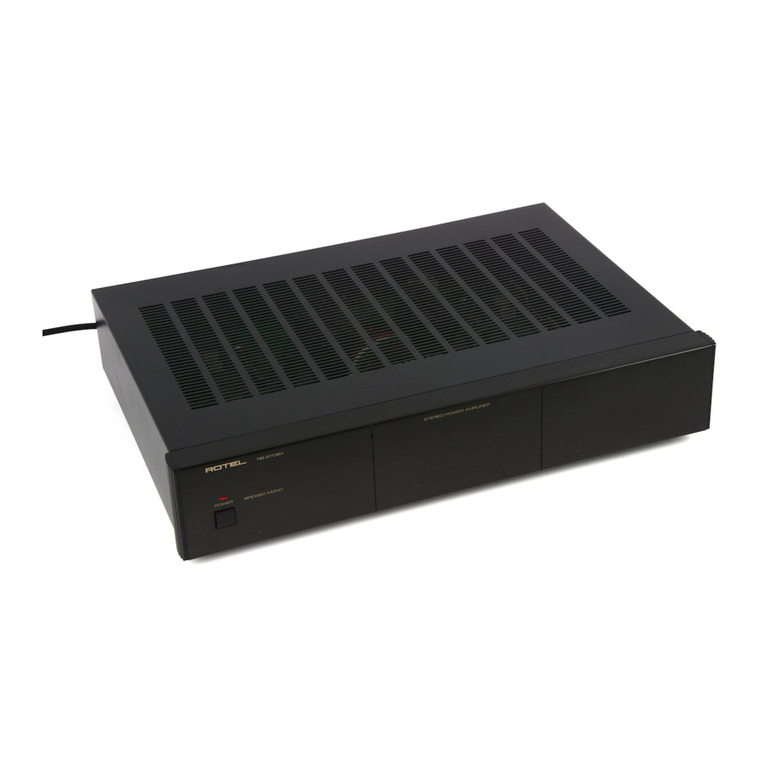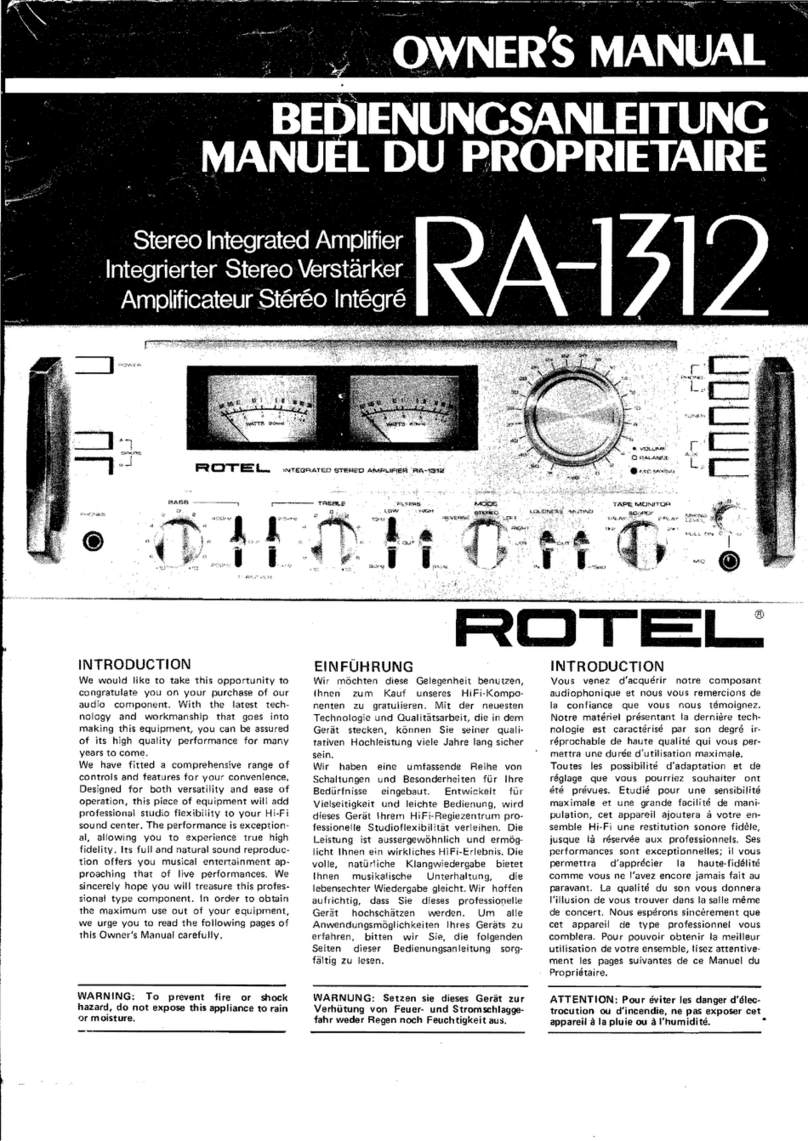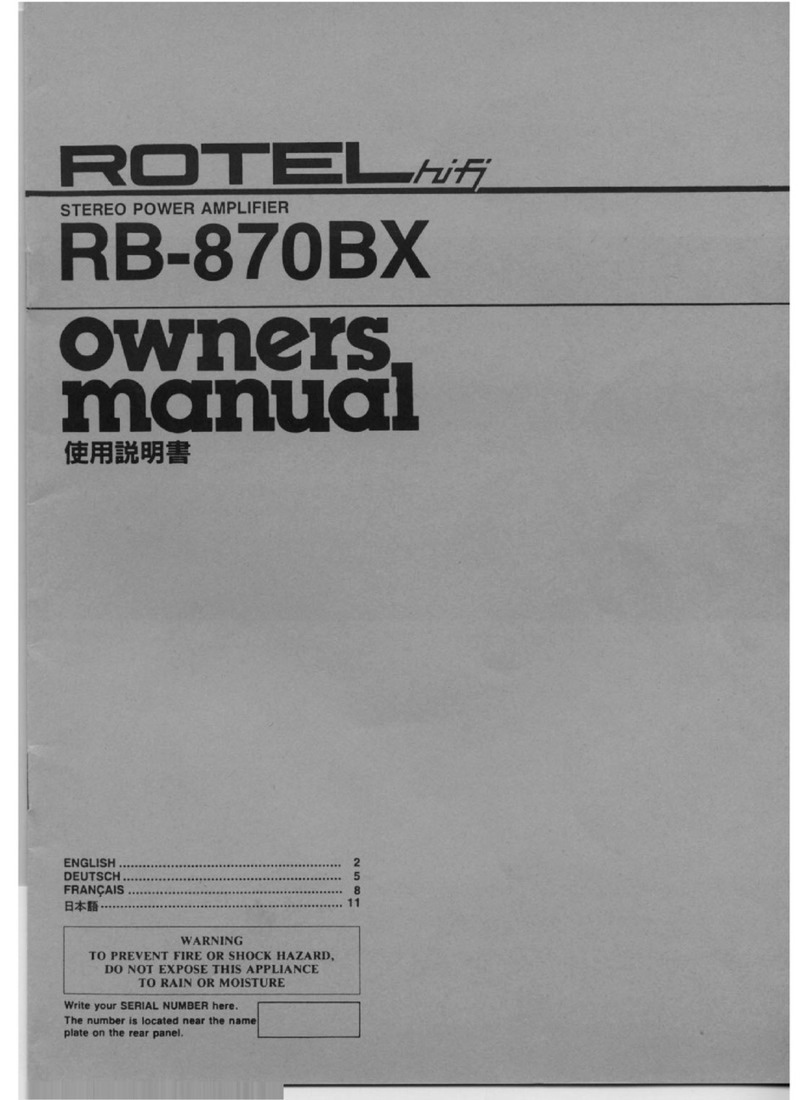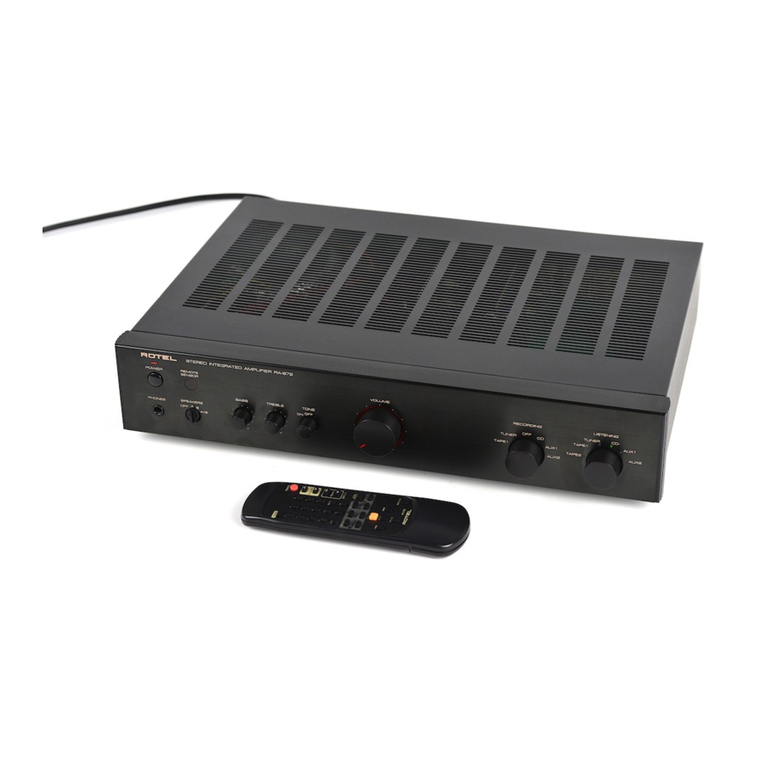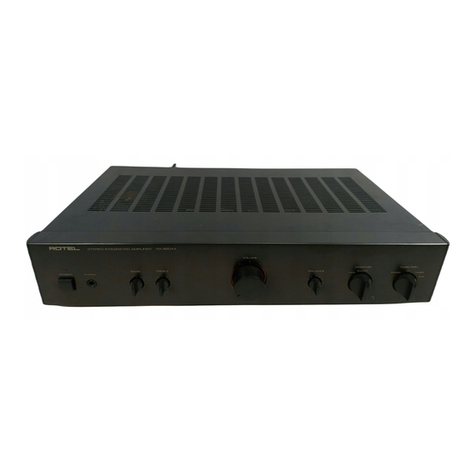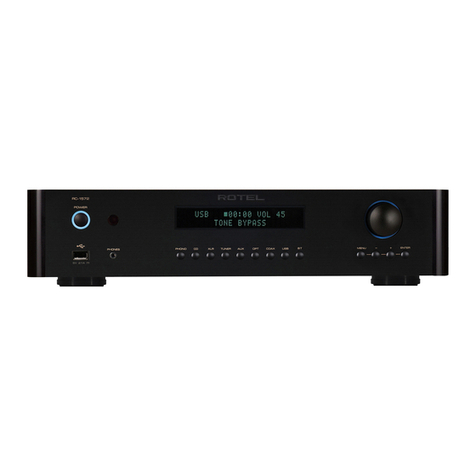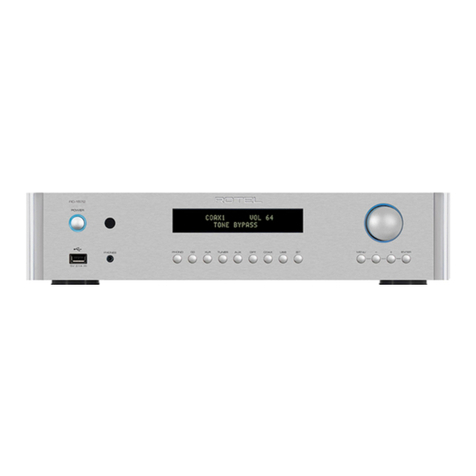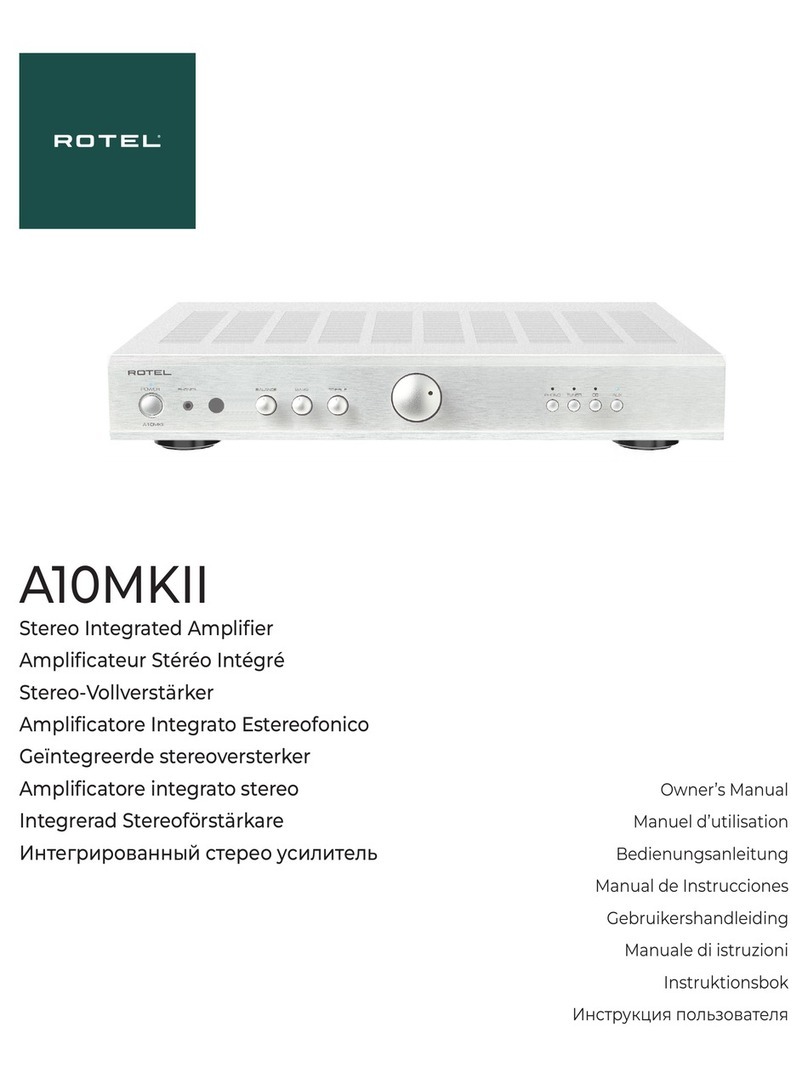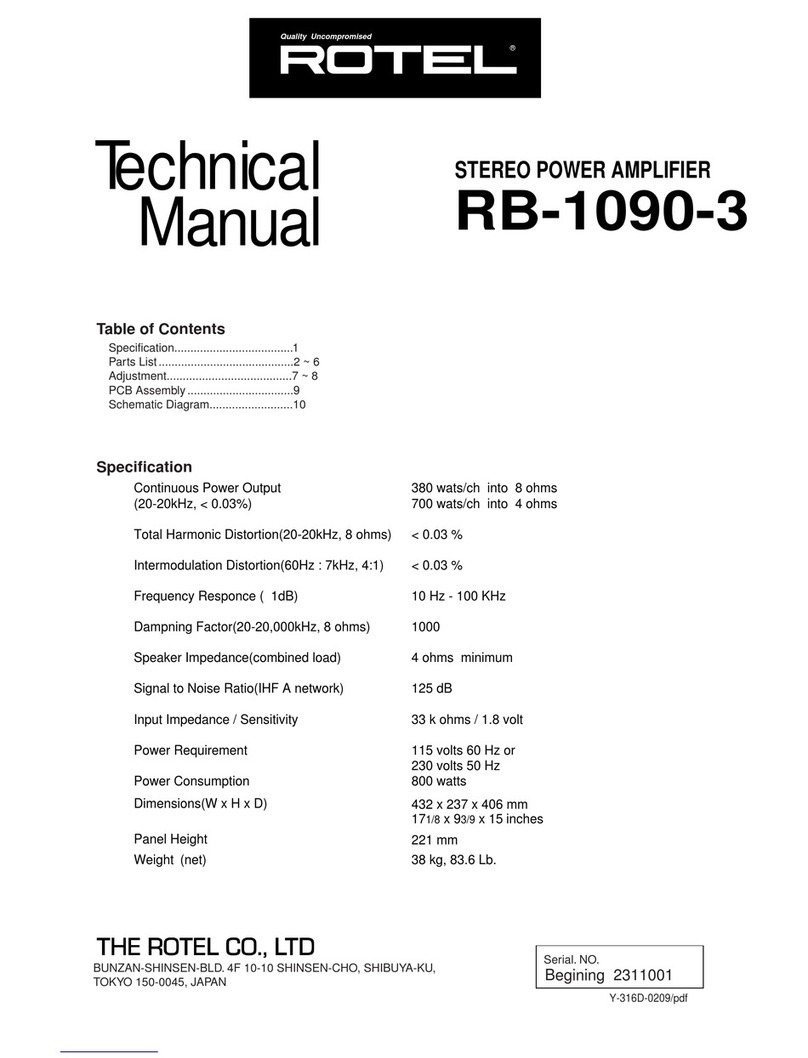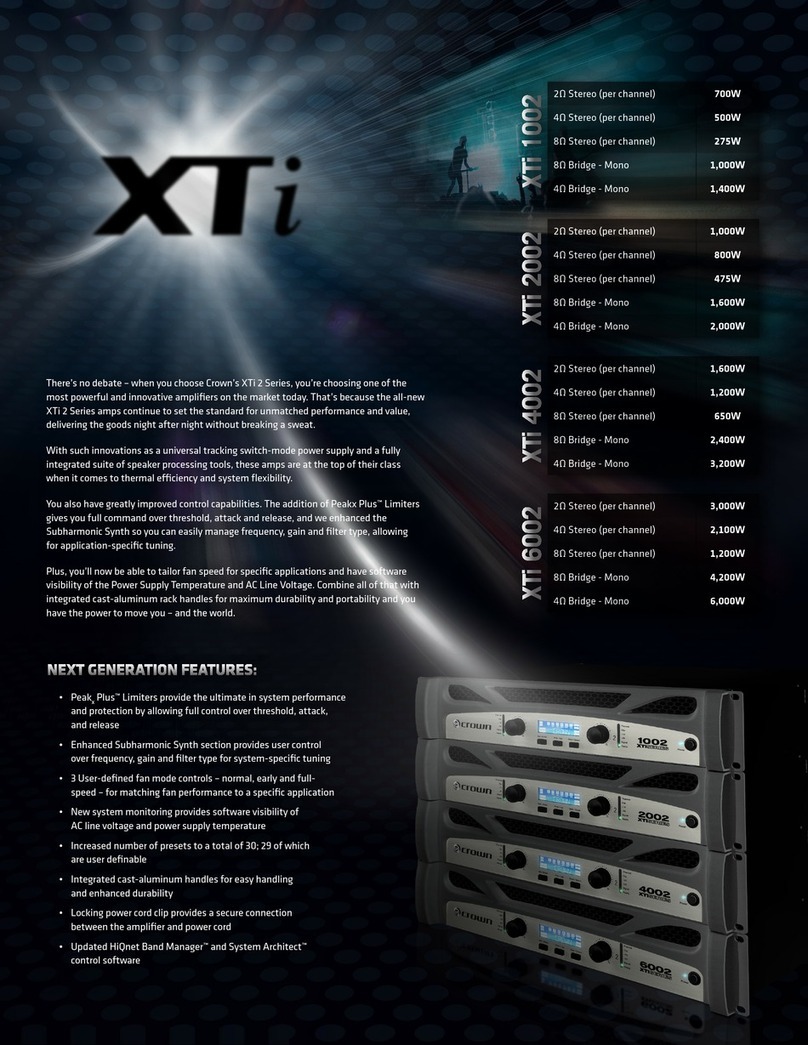
7English
A Few Precautions
Please read this manual carefully. It provi-des
complete information on how to incorporate
the RC-972 into your system as well as gen-
eral information that will help you get opti-
mum sound performance. Please contact your
authorized Rotel dealer for answers to any
questions you might have. In addition, all of
us at Rotel welcome your questions and com-
ments.
Save the RC-972 shipping carton and all en-
closed packing material for future use. Ship-
ping or moving the RC-972 in anything other
than the original packing material may re-
sult in severe damage to your amplifier.
Fill out and send in the owner’s registration
card packed with the RC-972. Also be sure
to keep the original sales receipt. It is your
best record of the date of purchase, which you
will need in the event warranty service is ever
required.
Placement
Like all audio components that handle low-
level signals, the RC-972 can be affected by
its environment. To minimize the chance the
RC-972 will pick up hum or interference, do
not place it on top of an amplifier or any other
device that has a large power transformer.
Keep the RC-972 away from devices that have
motors for the same reason. Do not place the
RC-972 where it will be exposed to direct sun-
light.
We recommend installing the RC-972 in fur-
niture designed to house audio components.
Such furniture is designed to reduce or sup-
press vibration which can adversely affect
sound quality. Ask your authorized Rotel dealer
for advice about component furniture and
proper installation of audio components.
The RC-972 is supplied with a compact, easy
to use remote control – the RR-C91. In order
to take advantage of the convenience it pro-
vided, the RC-972 must be placed where you
can see the Remote Sensor on the front panel.
Cables
Be sure to keep the power cords, digital sig-
nal cables and regular audio signal cables
in your installation away from each other. This
will minimize the chance of the regular au-
dio signal cables picking up noise or inter-
ference from the power cords or digital cables.
Using only high quality, shielded cables will
also help to prevent noise or interference from
degrading the sound quality of your system.
If you have any questions see your authorized
Rotel dealer for advice about the best cable
to use with your system
Remote Control
The RC-972 is supplied with an RR-C91 re-
mote control. This compact unit allows you to
operate many of the controls of the RC-972
from your listening location. When using the
RR-C91 the emitter on the front of the control
must be pointed at the RC-972 front panel.
The RR-C91 duplicates the basic functions of
the front panel control. When a control is on
both the front panel and the remote control,
both control identifiers are shown in the re-
lated instruction text. For example, to change
the volume level you can either turn the con-
trol on the front panel or use the buttons
on the remote control.
Remote Sensors
The Remote Sensor picks up the infrared sig-
nals from the remote control. Do not cover or
block the sensor. It must be unobstructed or
the remote control will not work properly. The
operation of the Remote Sensor can also be
affected if it is exposed to bright light, par-
ticularly sunlight. Certain types of lighting, such
as halogen lights, that emit a fair amount of
infrared light, can also interfere with proper
operation. In addition remote control functions
may not work reliably if the batteries in the
RR-C91 are weak.
Remote Control Batteries
The supplied batteries must be installed be-
fore the remote control can be used. The
battery cover is on the back of the RR-C91.
Gently press the small triangular symbol on
the cover and slide the cover down to ex-
pose the battery well. Install the batteries with
the terminals as shown in the illustration in
the battery well. Test the control for proper
operation, then slide the cover back into
place. When the batteries become weak the
remote control won’t operate the RC-972
consistently. Installing fresh batteries should
eliminate the problem.
Note: Remove the batteries from the re-
mote control if it will not be used for a
long period of time. Do not leave run
down batteries in the remote control. Ex-
hausted batteries can leak corrosive
chemicals which will damage the unit.
Output Connections
[See Figure 3 for RCA output con-
nection illustration.]
The RC-972 has RCA-type output connec-
tors that are compatible with the inputs of
most power amplifiers. Use high quality
cables and be sure to connect the Left and
Right channel outputs of the RC-972 to the
correct channels of the amplifier.
There are two sets of outputs on the RC-972.
The second set of outputs may be used in
custom system configurations to drive a sec-
ond power amplifier or to supply a signal
to a special signal processor.

